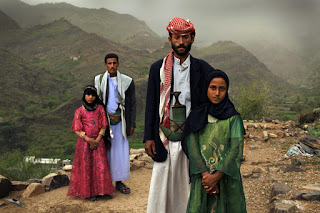 |
| Photo By: Richard Drew |
My original definition from module two was “the art of
telling real life, historical, important, and hidden stories through
photographs”. After taking in all the content from this course, I believe this
definition is still correct. I think this is correct because many of the
content we viewed throughout the course directly related to my definition. Many
of the videos were about telling true and important information. Also, many
photojournalists motivations were because they wanted to tell stories that
other people couldn’t tell themselves. The biggest “ah-ha moment I had was when
we examined ethics in photojournalism. I think this had the biggest impact on
me because it forced me to look at my own ethics and the reasons for having them.
I still think that photos can change the world. Throughout this course I have
encountered many images that influenced emotion and thought, but the one that
sticks out the most is “The Falling Man” taken by Richard Drew on September 11th,
2001. I think this had the biggest impact on me because it’s such an iconic and
symbolic picture from one of the most tragic events in our country’s history.
Seen as an unethical photograph at the time, the image has turned in to a
symbol of remembrance.
 |
| Photo By: Ashley Gilbertson |
One thing I learned about photojournalism was that some
professionals will do anything to get the shots that they need. In Sarah
Pelletier’s blog, she talks about how early in Ashley Gilbertson’s career he refused to wear protective equipment while on scene in dangerous environments. According to her blog, he did this because he was seeking an adrenaline rush and was extremely dedicated to getting other people’s stories told.
 |
| Photo By: Stephanie Sinclair |
A second thing I learned was many photojournalist’s
motivations reside in their passion and want to help less-fortunate people
around the world. For example, in Jaylan Ramos’ blog she writes about Stephanie
Sinclair’s motivations as a photojournalist and activist. According to this
blog most of her work is war photography but outside of that content she focuses on females struggling around the world. She more specifically focused on child marriage.
 |
| Photo By: Daniel Berehulak |
A third thing I learned is that photojournalists can be
skilled in a variety of areas, techniques, and subjects. In Lindsey Broussard’s
blog she writes about Daniel Berehulak’s career as a famous photojournalist.
According to her blog his career started in 2002 as a sports photojournalist but he later changed paths and started a freelance career. He then began photographing important events around the globe.
For my creative experimental exercise, I chose to photograph
blue collar workers, more specifically construction workers and sites. I chose
to do this because throughout the course many of the photojournalists we
examined chose to photograph content that they cared about or that they had a
connection with. I have worked construction for five years and I think it has
been a big part of shaping me into who I am today.
During the creative experimental exercise, I had an
interesting time composing the images without telling people what to do. I also
tried to keep people’s faces out of the images. I think it was a good experience
in relation to my definition of photojournalism because I kept all the images
true to reality and it’s a field of work that many people are unfamiliar with.
(All images beneath By: Ethan Murray)






Comments
Post a Comment